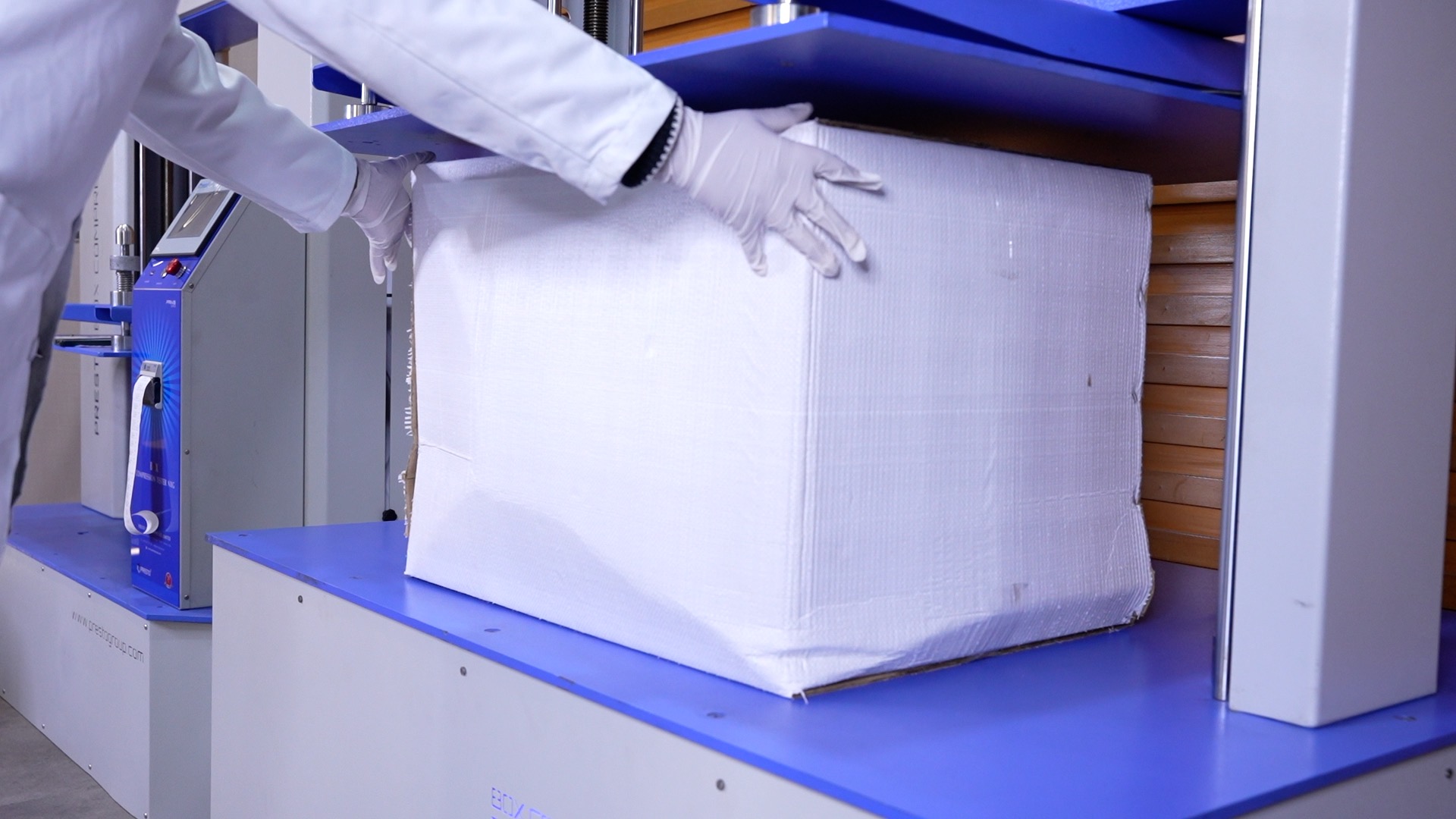

Gaurav Malhotra-Testing Instrument Expert
13-1-2025
Evaluation of the box's efficiency under transport heavily relies on testing equipment used, among which, the Box Compression Tester stands tall. This equipment holds significance in evaluating the structural strength of corrugated boxes, as they withstand the rigours of the supply chain without compromising the products inside.

A box compression tester, or BCT, is a device that determines a box' s compressive strength by simulating conditions that a box can experience during transportation and storage. The test measures the maximum force, (in KGF) that a box can withstand before collapsing. This data is critical to the box's ability to protect its contents.
This information is quite crucial for the packaging engineers to design strong packaging solutions that will withstand the stacking, vibrations, and other inherent challenges of the distribution process.
The test is commonly carried out by compressing a box between two plates and measuring the force required to cause structural failure. This provides insights into the durability and in-service performance of the box under varied load conditions.
Box Compression Test KGF: The most significant measurement unit in compression testing is KGF which tells the amount of force that will crush or collapse a box. This number helps to indicate whether the box is capable or not.
Box strength tester: This is a term used to refer to the testing equipment for the compressive strength of a box.
The Box Compression Test applies uniformly distributed pressure to a sample box to simulate the service conditions it will be subjected to in the supply chain. It includes typical vertical compression, simulating stacking conditions, lateral compression, side pressure conditions, and shear forces resulting from frictional and movement-related causes.
The test gives the box compression strength in KGF, which is the amount of load a given box can withstand before it fails.
Manufacturers use the formula for BCS to calculate this:
BCS= P/A
Where:
P = Applied force in KGF(kilogram-force).
A = Area of the box in cm² or inches².
This simple but effective calculation allows manufacturers to know the adequacy of packaging designs so that their boxes do not collapse while holding their product in storage, transit, or handling.

Some factors affect the outcome of the Box Compression Test. These are:
The Box Compression Tester or Packaging Compression Tester has a role to play at almost all stages of packaging design and for quality control:
What can be tested using the Box Compression Tester?
You can measure the compression strength of any box. The amount of pressure it can withstand before deforming.
How can a Box Compression Tester be maintained?
A few Maintenance steps can be done to obtain correct results every time:
How Does a Box Compression Tester Help in the Packaging Industry?
The Box Compression Tester will help manufacturers in the packaging industry test and evaluate packing materials for improvements in durability, optimize box designs, and ensure that products reach their destination without damage. Data produced from strength and stiffness testing allow for less damage during packing, cost savings, and an overall efficient supply chain.
The Packaging Compression Tester provides an essential path for confirming the reliability and longevity of packaging solutions. From the optimization of box designs to maintaining consistent product protection during transit, the insights from this machine are quite crucial for determining packaging material performance. Manufacturers who understand the basic principles of Box Compression Testing find themselves ahead in an industry where being able to package correctly is key to customer satisfaction and operational efficiency.
Looking for the best Box Compression Tester price? Contact us today at +91 9210 903 903 or email us at info@prestogroup.com. Get expert guidance and competitive pricing for premium testing solutions. Don’t miss out—reach out now!
Related Blogs

Achieve accurate inspection of automotive and aerospace components using optical profile projectors. Improve quality control and precision.

Protect medicine & pharma products with precise vacuum leak testing. Boost quality & trust – Get your tester today!

Understand why tensile tests give incorrect results and learn best practices to avoid specimen and machine-related failures.